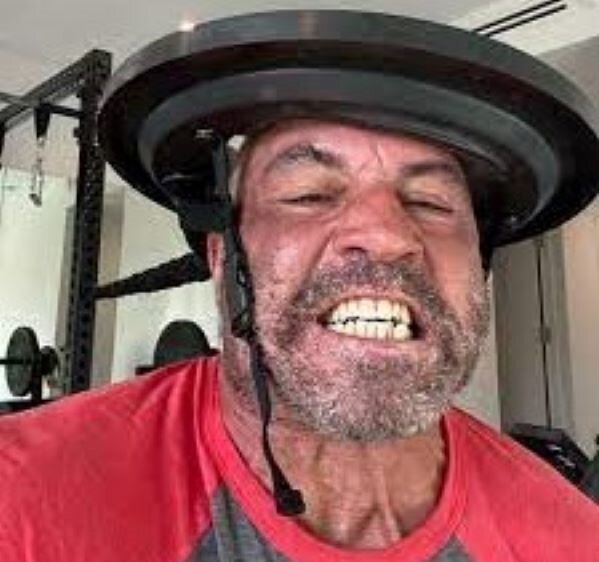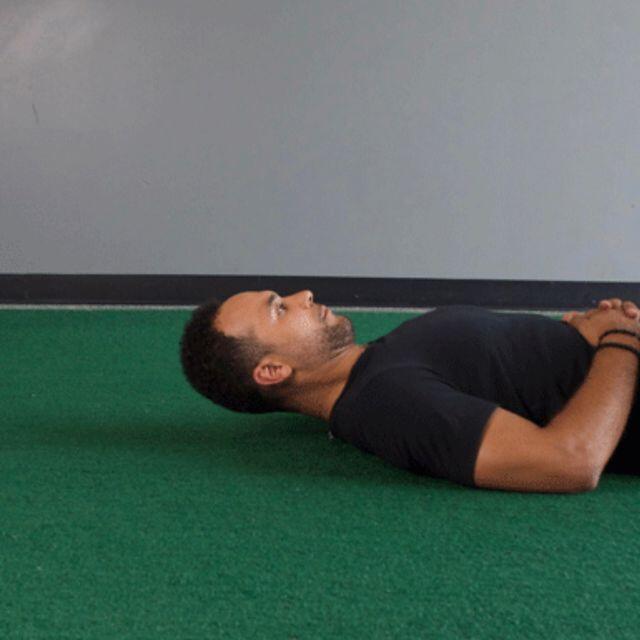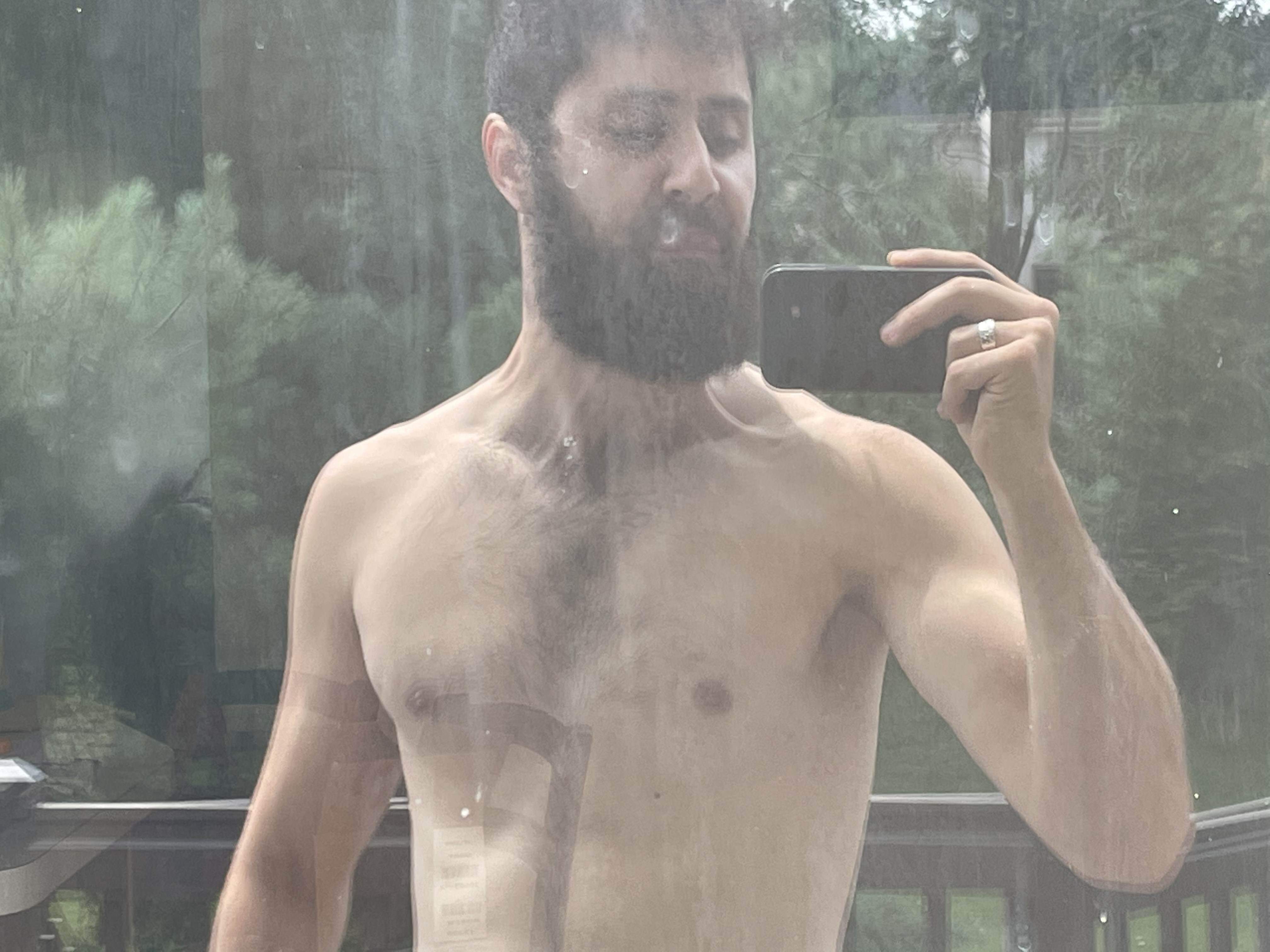
You can follow me on Twitter @creatorvilla. My perception is that a lot more people today are training neck than ever before. This has a lot to do with recent research that has come out on the benefits of a stronger neck. It also has to do with advances in training equipment. The neck, of course, is a group of core stabilizing muscles that support the head, and is a factor in virtually every strength training movement. However, there are a number of reasons why people especially target this area for maximum impact. In this article, I present 4 of the most common reasons people train neck: 1-) to treat / prevent neck pain; 2-) to reduce the risk of concussions / brain injury; 3-) because bigger necks are more attractive; and 4-) to strengthen the voice. This month also marks a year since I started training my neck. I’ve included some progress pics and a one-year update of my experience at the bottom of the article.
Disclaimer: You should consult your doctor before undertaking any strength training program, as there are risks involved, especially with a sensitive area like the neck.
4 Reasons People Train Neck Muscles
1. To Treat / Prevent Neck Pain
Conventional wisdom has it that a stronger muscle is less likely to get injured, and that strength training is an important part of recovery. When people get injured, physical therapy is one of the first things the doctor recommends. Neck pain, in fact, is quite common and can be debilitating. According to this source, “In the course of 3 months, about 15% of U.S. adults have neck pain that lasts at least one full day.” The expression, “pain in the neck” is a common idiom to represent a very annoying or cumbersome situation. The human muscular system is highly connected, and so a strong neck can also support other muscle groups, like the shoulders and back.
In one study, “Neck muscle training in the treatment of chronic neck pain: a three-year follow-up study,” 118 women with “nonspecific chronic neck pain” undertook a successful one-year strength-training regiment. The study revealed that after a three-year follow-up, improvements in pain and range of motion were largely maintained, despite the fact that adherence to the program faltered. The researchers concluded, “Since a 12-month exercise programme shows a long-term effect, exercise may not need to be performed regularly for the remainder of the subject’s life.”
2. To Reduce The Risk Of Concussions / Brain Injury
The potential here is extremely important for people who play contact sports, like football, wrestling, and mixed martial arts (and even soccer, where heading the ball is quite common). Approximately 4 million concussions occur in the US alone ever year (source). Repeat brain injury has been linked to a host of medical issues, including chronic traumatic encephalopathy (CTE) (See NFL safety changes). A number of studies have identified a relationship between neck strength and the incidence of concussions.
This study, for example, found that “overall neck strength” was a significant predictor of concussions. For every 1 pound increase in neck strength, the odds of a concussion decreased by 5%. The researchers concluded that “identifying differences in overall neck strength may be useful in developing a screening tool to determine which high school athletes are at higher risk of concussion. Once identified, these athletes could be targeted for concussion prevention programs.”
One literature review, published in October of 2018, concluded that the results were “inconclusive on whether neck musculature strength prevents concussions,” and that more research was needed. However, researchers at the Rutgers School of Health Professionals wrote in a paper published in February of 2019, “We have identified neck strength, size and posture as potential factors that reduce risk [of concussions] by lessening the magnitude of force upon impact. Thus, increasing neck strength and possibly size could substantially reduce risk or severity of injury or outcomes” (source).
Another team of researchers in the Department of Kinesiology and Community Health at the University of Illinois wrote in a March, 2019, perspective article that “The sports medicine literature has shown that decreased neck strength and slower neck muscle activation are significant predictors for sports-related concussion.” (source).
Overall, the evidence seems to be mounting that neck strength is, in fact, a risk factor for concussions in sports, and all their associated ills. Neck strength may also provide extra support if someone, God forbid, experienced a fall or were in a car accident.
3. Because Bigger Necks Are More Attractive
The tremendous strength in Leviathan’s neck strikes terror wherever it goes.
Job 41:22, NLT
The neck is one of the most visible muscles in the body. Unlike arms, legs, etc., the neck is exposed nearly all of the time. A thicker neck is typically associated with overall physical strength and dominance. People who bodybuild for aesthetics may want to take a look at these before and afters.


4. To Strengthen The Voice
The neck muscles are heavily involved in eating, drinking, speaking, singing, and so on. Pain/tension in the neck area can impair any of the aforementioned activities. I’ve read articles on neck exercises recommended for singers and heavy voice users. Stronger neck muscles mean greater control, and they can ease the daily burden of supporting the head and speaking apparatus. It stands to reason that a stronger, healthier neck is in the interest of people who use their voice a lot.
My One-Year Update

About a year ago, I started training my neck. I used to suffer from chronic neck pain, and so this was my way of taking action against that. I focused primarily on neck curls, while lying down on my bed, head extended off the edge, or on the floor as pictured in Figure 1. (You can watch a YouTube video on proper form). I also bought a harness, which I would use from time to time, but I found that I could increase resistance simply by pressing on my forehead. A harness can be especially helpful for training the back of the neck, since after a certain point it’s hard to get enough pressure with your hands to really give those muscles a good workout. I also did a lot of isometric movements where I would hold my neck in a pressure position for a few minutes at a time (see Figure 1).
In sum, I did a combination of neck curls / isometric movements on my back, and sometimes neck extensions while on my stomach (to work the back of the neck), for an average of maybe 4-5 times a week for around 20 minutes each session. My average rep range was anywhere from 20 to 100+, depending on the level of resistance. The first time I experienced soreness in my neck, it felt weird. I even wondered if I had hurt myself. They say this is common since we aren’t accustomed to that feeling in the neck, and it is a very sensitive area. Fortunately, the pain went away within a couple days and I didn’t have any real issues after that.
Here are some short clips / images I took at different points in the process. Note that I weighed anywhere from 145-150 lbs. This year I focused on cardio, and my overall weight was at an all-time low. Overall weight is probably the biggest thing that affects neck thickness. However, training neck makes the neck stronger and thicker and more shredded at any level. I also did not take any supplements aside from an occasional protein shake because this experiment was more of a peripheral thing for me.
3 Month Mark (02.2021)
Most people cannot flex their neck, even some people who been strength training for a long time. As you can see in the videos, by the three-month mark I was slowly gaining the ability to flex my neck. That’s a lot of work for a very subtle effect.
7 Month Mark (06.2021)
Here you can see the muscle start to coalesce. Flexing is a lot easier at this point.
10 Month Mark (09.2021)
Now I have enough muscle mass where I can flex either side of my neck with relative ease. After the 10-month mark, I have continued to work the neck, but I have not noticed any real improvement. I imagine I would need to increase volume/resistance, maybe go up in weight, or start taking supplements to see much progress after this. I was really consistent with few exceptions for 10 months, which is a long time to focus on a single muscle group. Gains after that point are a lot harder to come by.

